Affiliate disclosure: This post may contain affiliate links. Please see our Privacy Policy.
Bee Balm Tincture is an easy-to-make herbal remedy that helps relieve sinus congestion, sore throats, and other cold/flu symptoms. It’s also used to treat stomach upset, gas, diarrhea, and menstrual cramps.
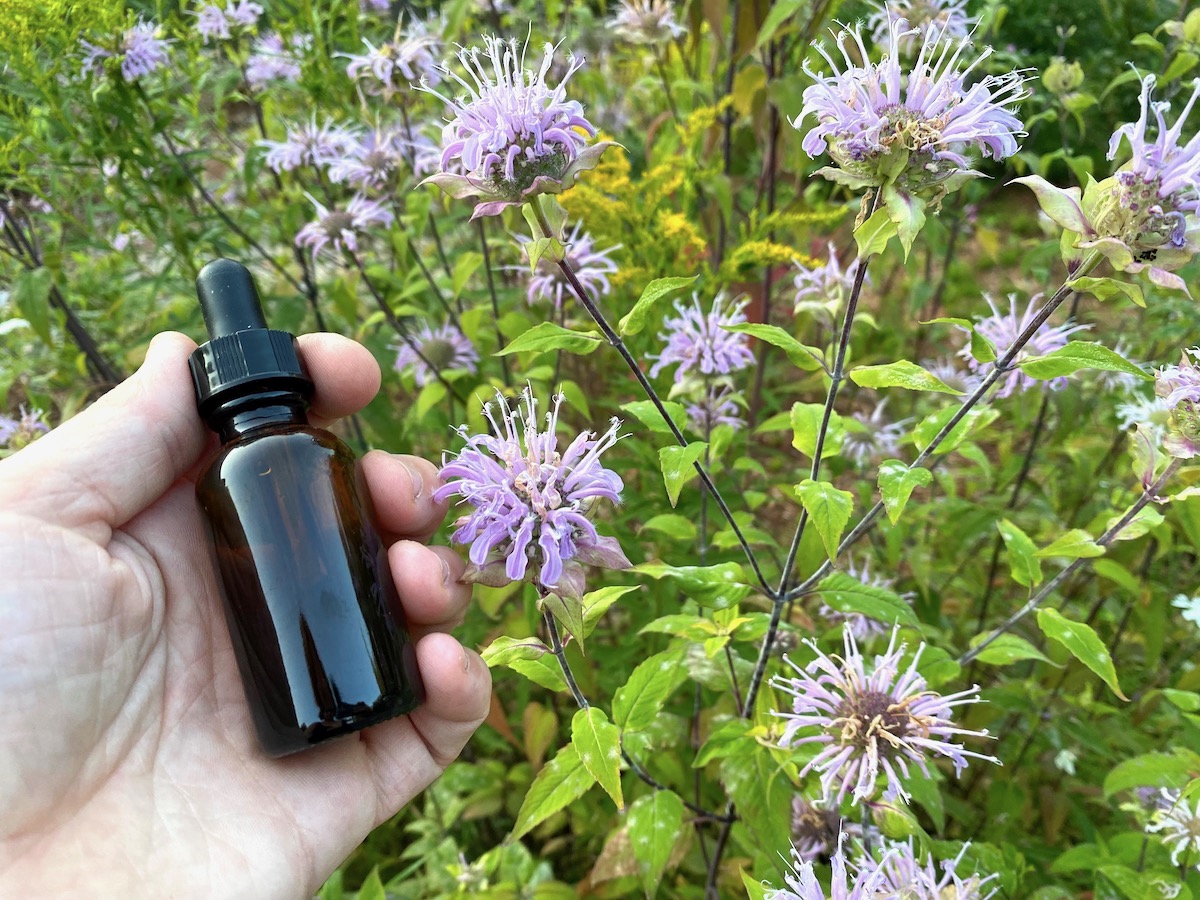
Bee balm is a truly exceptional garden flower. It’s easy to grow, stunningly beautiful, and it brings all the pollinators to the yard.
Believe it or not, bee balm also happens to be both edible and medicinal.
There are literally dozens of ways to use bee balm, and it’s commonly used as a seasoning in Mediterranean cooking (the leaves taste a bit like oregano).
Those same herbal constituents that make it tasty and a bit spicy also contribute to its medicinal potential, and it’s used to treat colds, flu, congestion, and sore throats…as well as a whole host of other things.
There are many different types of bee balm, both wild and cultivated, and this tincture recipe will work with any of the monarda species that are edible. This includes the common red bee balm grown in so many perennial gardens, but also the native wild pink bee balm that you can find in wild places all over the country.
We grow cultivated bee balm in our perennial beds, but I also forage wild bee balm for its unique spicy flavor that’s a bit more intense than its cultivated cousin. (They both have the same medicinal benefits.)
If you don’t have bee balm close at hand, it’s easy enough to grow from seed. Here’s where you can find Scarlet Bee Balm Seed Packets (Monarda didyma) as well as Wild Bergamot Seed Packets (Monarda fistulosa).
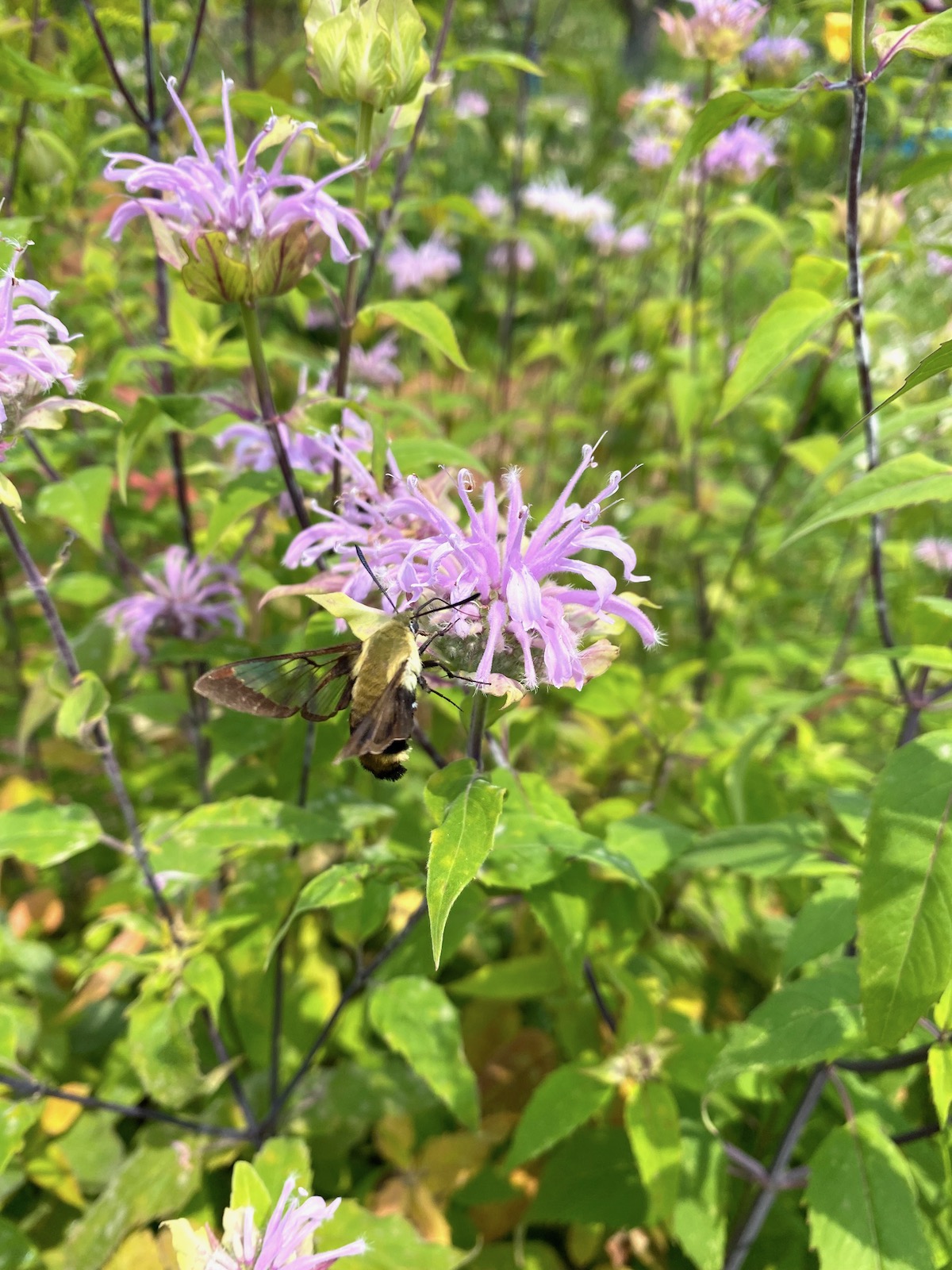
(Always consult your doctor or a clinical herbalist before trying any new herbal remedy, as there’s always the possibility of unintended consequences, allergic reaction, or interactions with other medication. If you’re harvesting wild plant material, make sure you’re 100% confident in your identification and consult multiple sources for your ID. The following is based on my research and experience, but I don’t claim to have any certifications that would qualify me to advise you on your health. Please do your own research and always verify with multiple reputable sources.)
Bee Balm Medicinal Benefits
The name “bee balm” is an umbrella label for over 17 species and 50 cultivars of this aromatic plant that is a member of the mint family. Bee balm has been used for thousands of years by Native Americans for its antimicrobial and stomach-soothing capabilities.
Bee balm has a high thymol content, which is a compound with antiseptic qualities. Because of the plant’s surplus of thymol, it has traditionally been used to treat colds, flu, and congestion as well as gas, diarrhea, nausea, sore throat and fever. In addition to these uses, bee balm extract can be taken to relieve menstrual cramps.
Bee balm is also taken as a nervine tonic, which means it helps soothe the nervous system and relieve anxiety in both children and adults.
When used externally, bee balms can help calm stinging scrapes and rashes.
How to Make Bee Balm Tincture
To make a bee balm tincture, you’ll need the following ingredients and equipment:
- Bee Balm flowering tops and leaves, dried or fresh
- Vodka (or any other palatable alcohol that’s at least 80 proof/40 percent — there’s no need to splurge here, I always use Smirnoff because it’s inexpensive and has a neutral taste)**
- One-pint mason jar with lid (amber glass is ideal, but as long as you keep the tincture away from light at all times it won’t make a difference)
- Funnel
- Cheesecloth
- Fine mesh sieve
- Amber glass tincture bottles (with dropper)
**Never use isopropyl/rubbing alcohol for tinctures (or any other remedy you plan on ingesting). Even in small amounts, this type of alcohol is toxic and meant for external applications only.
To make the tincture, add fill a jar about 3/4 of the way full with fresh bee balm (or about halfway full with dried flowers/leaves). Bee balm flowers are very light, so pack them down to make sure they really take up space in the jar.
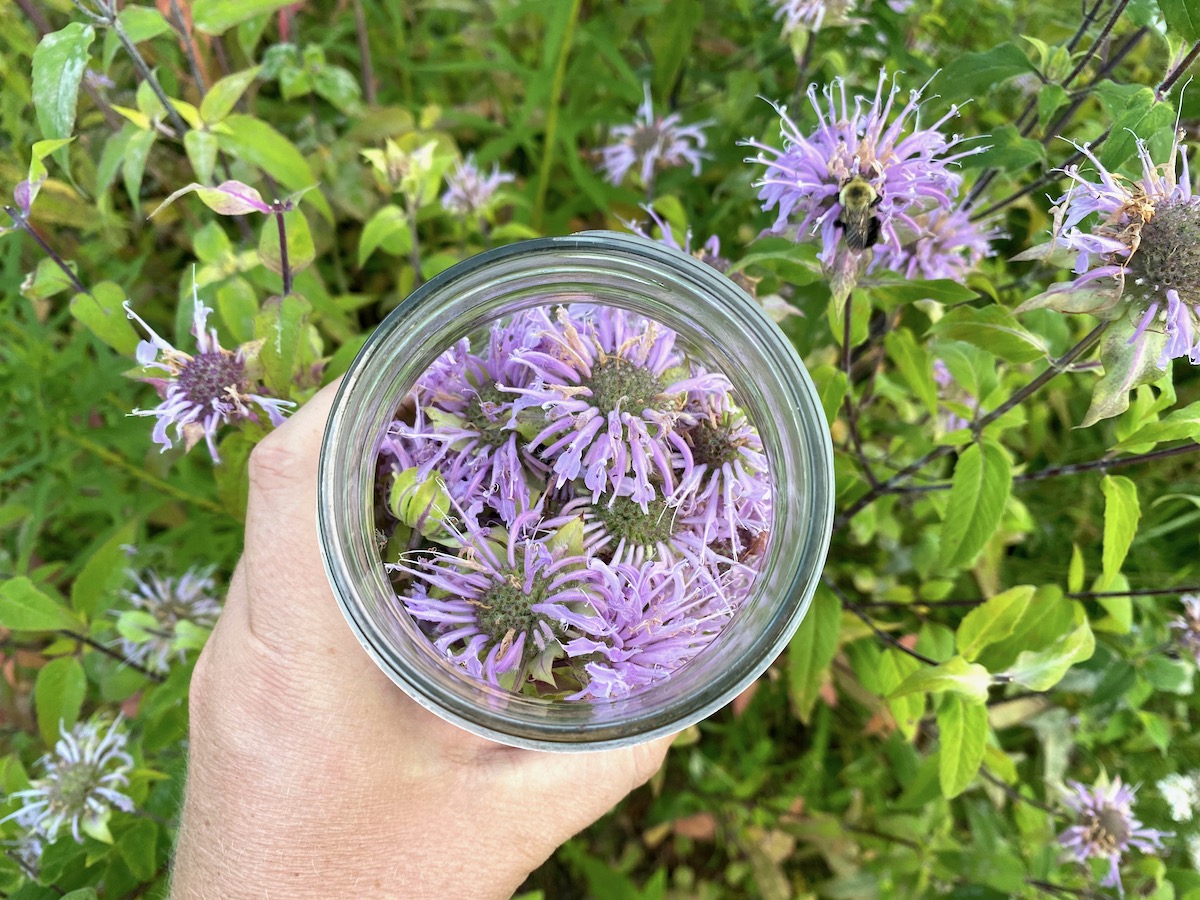
Cover the bee balm with vodka, or whichever alcohol you’ve chosen, and seal the jar with its lid.
Keep the developing tincture in a cool, dark place, and give the jar a gentle shake every few days. (If you remember, every day is better, but at least once a week will do.)
After about 4 to 6 weeks, it’s time to decant the tincture.
To do this, you’ll need to line a funnel with a few layers of cheesecloth. Carefully strain the tincture into small amber glass tincture bottles, squeezing the bee balm blossoms to make sure all the liquid is expelled.
Once the tincture has been decanted, label the tincture bottles with the date and suggested dosages (I use a small piece of masking tape and a marker, it peels off easily when I’m ready to use the bottle for something else).
For more information on the general process, I’d suggest reading this guide to making herbal tinctures at home.
Bee Balm Tincture Dosage
For an exact dosage specific to your body and needs, I’d suggest consulting a clinical herbalist.
Generally, the dosage for Bee Balm Tincture is around 1 to 2 dropperfulls, taken several times daily (1 to 4 times) as needed to relieve symptoms.
Bee Balm Formulations
Since bee balm is generally used for congestion and sore throats, it’s nice in combination with other herbs that target similar cold/flu symptoms.
Elderflowers are a gentle remedy with similar effects, and they’re relaxing and anti-inflammatory.
Elecampane is a potent cough remedy, so that’s another good choice, but be careful here; it can be strong. It’s one of my favorite cough syrups, and the flavor is spicy and a bit similar to bee balm.
If you’re interested in the science behind combining herbs to enhance their effectiveness, I’d recommend taking this online course in Mastering Herbal Formulations from the Herbal Academy. It covers the science of blending herbs into homemade formulations in detail.
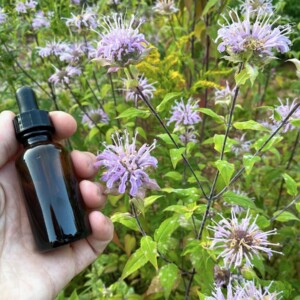
Bee Balm Tincture
Equipment
Ingredients
- Fresh or dried bee balm flowers and leaves
- Vodka or other high-proof alcohol *see notes for making a glycerite tincture
Instructions
- If using fresh bee balm, gather a generous amount of fresh leaves and flowers from the plant. Aim to fill your mason jar about halfway with the fresh material. For dried bee balm, fill your jar about 1/3 to 1/2 full. Fresh bee balm has a high water content, so you may need slightly more to compensate for drying. Once collected, chop the leaves and flowers into smaller pieces to increase the surface area for extraction.
- Place the prepared bee balm into your jar, making sure not to pack it too tightly. Pour high-proof alcohol (vodka is commonly used, but brandy or rum are good alternatives) over the herb, completely covering the plant material. The alcohol should be about 1-2 inches above the herbs to ensure full immersion.
- Secure the lid on the jar tightly. Give the jar a gentle shake to mix the contents, ensuring the plant material is evenly soaked. Place the jar in a cool, dark location, away from direct sunlight, and allow it to steep for 4 to 6 weeks.
- Every few days, give the jar a gentle shake to help the alcohol extract the medicinal properties from the bee balm. This also helps keep the plant material fully submerged, which is important for effective extraction.
- After 4-6 weeks, strain the tincture through a cheesecloth or fine mesh strainer into a clean glass container. Press gently on the herb to extract as much liquid as possible. Discard the spent plant material.
- Once your tincture is strained, transfer it into a dark glass storage bottle, which will help preserve the tincture by blocking out light. Label the bottle with the contents, date of preparation, and any usage recommendations. Store your bee balm tincture in a cool, dark place.
Notes
Usage and Dosage
Bee balm tincture can be used both internally and externally. It’s commonly taken in small doses for its calming, antimicrobial, and digestive benefits. Typical dosages range from 1-2 drops to 1-2 teaspoons, 2-3 times a day, depending on the individual and the condition being treated. It’s always best to start with a low dose and gradually increase if needed. Internal Use: Bee balm tincture is often used for respiratory issues, digestive discomfort, or as a mild sedative for anxiety or stress. It may also help with colds and flu. External Use: You can apply bee balm tincture topically to minor cuts, bruises, or skin irritations to help with its antiseptic properties.Fresh vs. Dried
Fresh herbs generally extract more quickly than dried, so if you are using dried bee balm, allow a bit more time for extraction (up to 8 weeks if needed).Shelf Life
Bee balm tincture, when stored properly in a cool, dark place, can last for several years. Always check for any changes in color or smell before use. While it may not “spoil” over time, the potency will decrease after about 18 to 24 months in storage. The tincture will last longer if kept at a cool room temperature, out of direct sunlight.Yield and Storage
The amount of tincture you get will depend on how much bee balm you use and how tightly you pack the jar. Generally, with fresh bee balm, you’ll get slightly more tincture than the alcohol you originally add due to the water content of the herbs. For dried bee balm, you’ll likely end up with a little less tincture than the alcohol you started with, as the plant material will absorb some of the liquid. For a quart jar, you'll need approximately 2 to 3 cups of alcohol, and for a pint jar, about 1 to 1.5 cups. Be sure the herb remains fully submerged throughout the infusion process for the best extraction.Alcohol-Free Glycerite Option
For those who prefer an alcohol-free tincture, you can make a glycerite using vegetable glycerin instead of alcohol. To make a bee balm glycerite, cover dried bee balm leaves and flowers with a 3:1 mixture of glycerin to distilled water. For fresh bee balm, use 100% glycerin and skip the water. Shake the jar daily for about 4 to 6 weeks, then strain and store in a dark glass bottle. This alcohol-free tincture can be used in the same way as the alcohol-based version, both internally and externally.Disclaimer on Homemade Herbal Remedies
I’ve been foraging wild medicines and treating my family with herbal remedies for the past 20 years, but I’m self-taught. Be aware that I am not a clinical herbalist, and this is based on my own research and personal experience using medicinal plants. I do not claim to have the experience that’d qualify me to advise you on your health, and I’m only providing this as a reference to encourage a broader interest in medicinal plants.
Please use this as a jumping-off point, but always do your own research and verify anything you read with multiple sources.
It’s always possible to have an adverse reaction to any medicinal herb, and plenty of people are allergic to even gentle herbs like chamomile. Always consult your doctor or a certified herbalist before trying any new medicinal plant. Often, they can have unintended reactions in combination with other herbs and supplements, and many herbs have side effects even when they are effective for their intended purpose.
If you are seriously interested in herbal medicine, I’d suggest investing in a course in herbal medicine, and I’d recommend any of the online courses put out by the Herbal Academy of New England. Specifically, the introduction to herbal medicine course and the family herbalist group of courses.
They also have a mushroom course, covering both medicinal and edible mushrooms, and a Botany and Wildcrafting Course. I’ve taken both and they’re informative, inspiring, and artfully presented.
Herbal Tinctures
Interested in making other homemade herbal tinctures?
- Yarrow Tincture
- Chickweed Tincture
- Elderberry Tincture
- Dandelion Tincture
- Burdock Tincture
- Echinacea Tincture
Herbal Medicine Making
Herbal medicines don’t stop at tinctures! Learn how to make more homemade medicine…
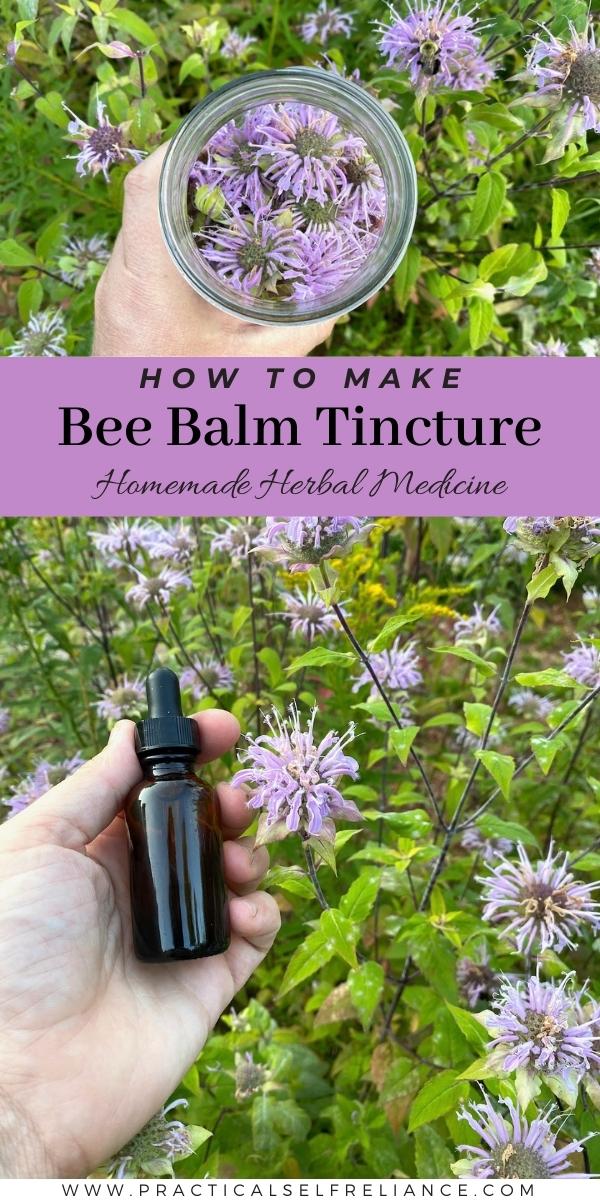
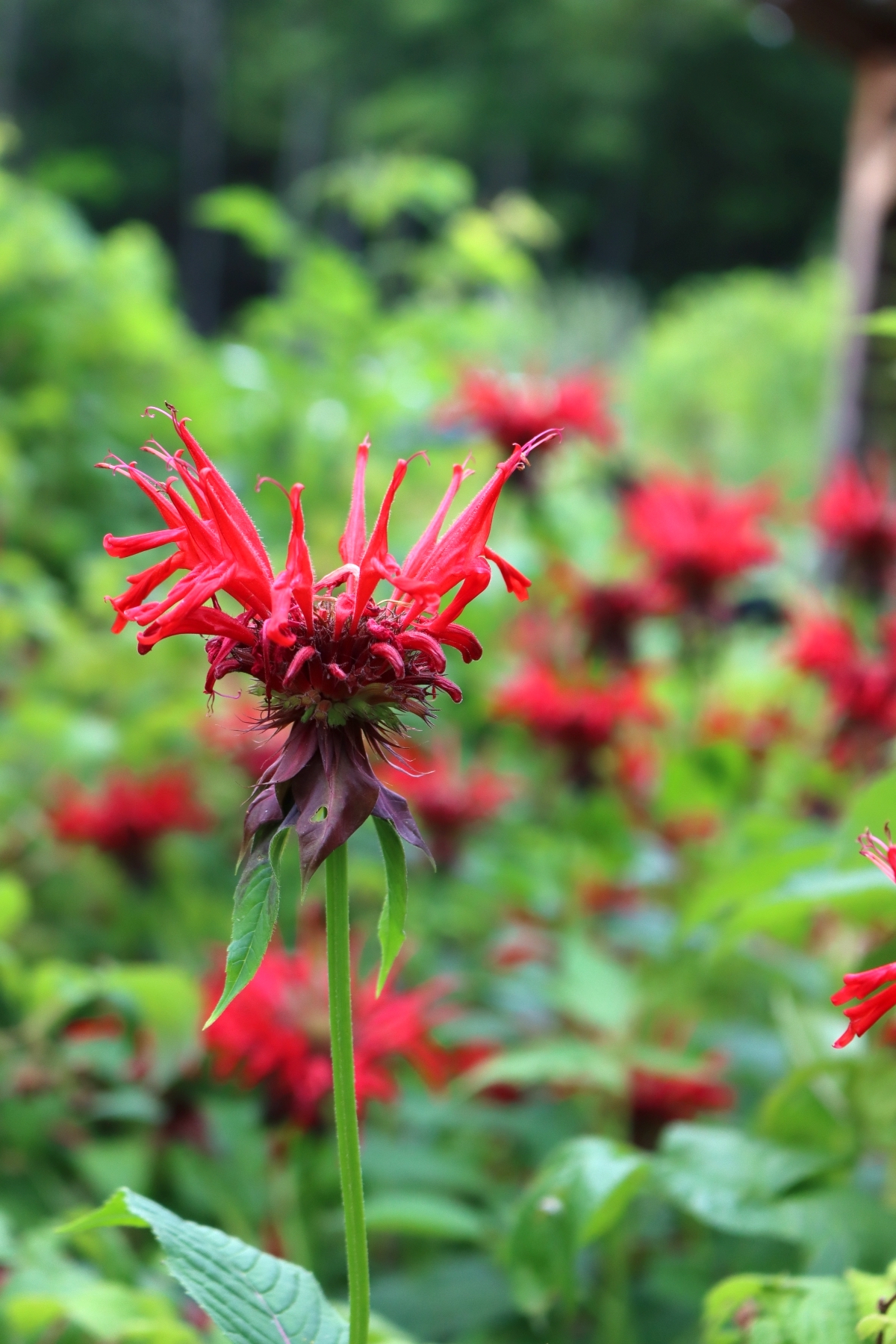
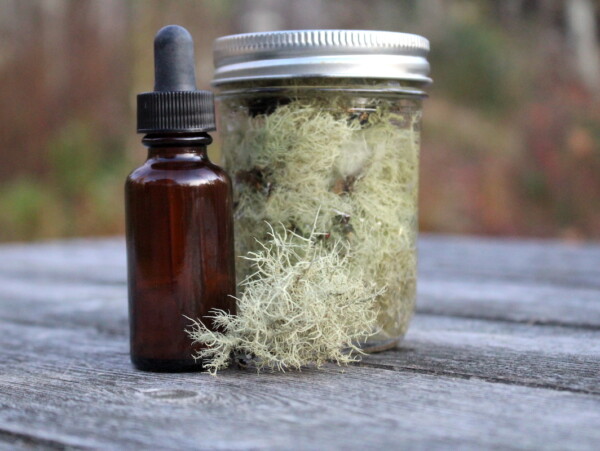
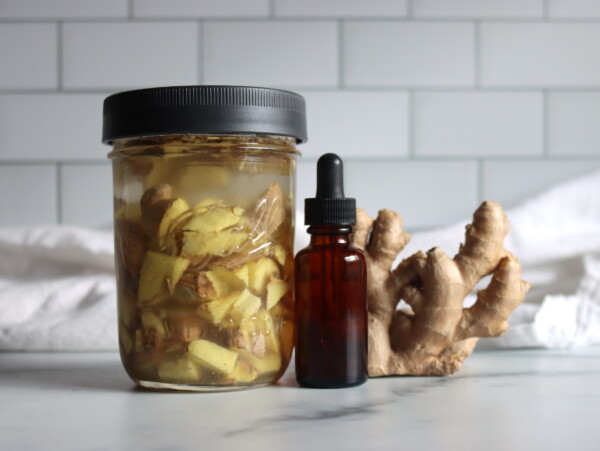
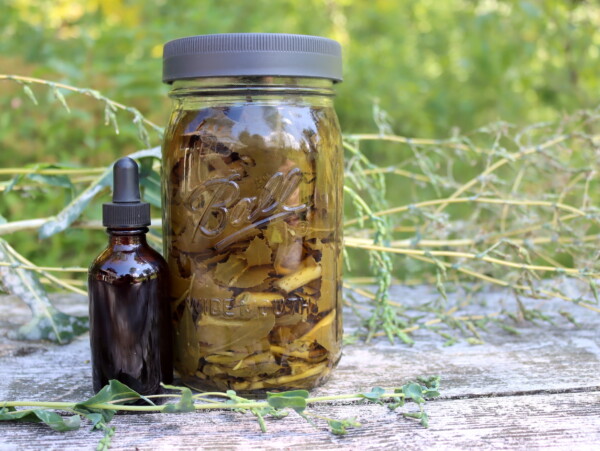
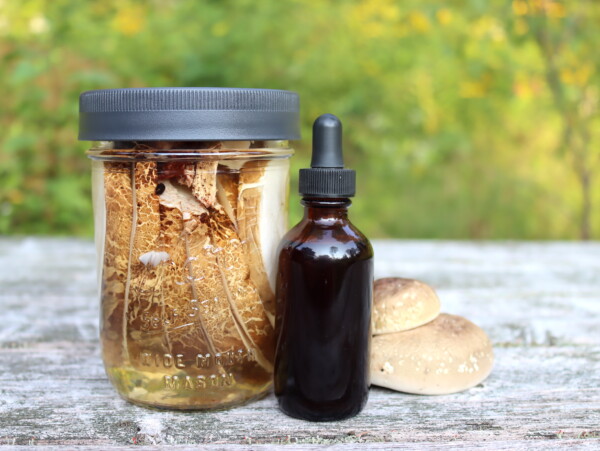
I just wanted to let you know that this sentence appears a little below the equipment list:
” To make the tincture, add 4 ounces of dried valerian root to a clean one-pint jar.
Just thought you would want to know!
Thanks for all your work,
Melinda
Thank you so much for catching that! I just made a batch of valerian tincture this week, and had a slip of the tongue (or keyboard) there. Fixed now!